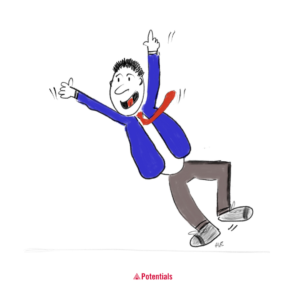
As this year comes to an end, it’s a good time to reflect and envision how you want to be and live in the New Year.
For years, I have had a process of setting my intention of how I want to experience life. While it has been useful to set concrete goals like writing a book or developing a program and exercising regularly, it is valuable to identify a quality you want to experiment with and grow.
I usually identify one word for a year. In the past I have had words like ease, gratitude, spaciousness and even joy. I then post the word on my computer and in places where I will see it. I find books, articles and courses that explore the concept and expect to enhance my experience of the value or mindset. I create an intention statement and say it daily. For example, “I experience joy.” As I say the statement aloud or to myself, I notice the sensations related to the intention. With joy, I feel an openness in my chest and a smile on my face and a sense of lightness.
What’s important is that more than just cognitively recalling the word, my intention is to embody the experience. For example, when joy was my focus, I noticed how joy feels in my body and checked in regularly to actually savor moments of joy. I did study joy. In addition, I worked with a friend and colleague to examine joy and we even developed and facilitated a course called Cultivating JOYBeing. I also incorporated practices such as noticing moments of joy each day and journaling about them. As I held the intention to live with joy and looked for moments of joy, I became more familiar and embraced joy. Before I set the intention for joy, I desired the quality, but truthfully knew worry and stress much more deeply. Setting an intention and incorporating practices to embody the quality is quite powerful. I am definitely a more joyful or JOYBeing person now.
Setting an intention is not an overnight quick fix, but if not now, when shall we start the process of building the habit? By setting an intention, we are affirming our identity as a joyful, open or grateful person. Rather than focusing on an action or goal we strengthen who we are. For example, you can set a goal to lift weights twice a week or you can envision yourself as strong and healthy. When we focus on who we are becoming we build the neural pathways of a strong person and more effortlessly take actions that confirm our identity.
Given the challenges we are experiencing in the world including polarization, rapid changes and uncertainty, I encourage you to consider setting your intention this year to take an Open Stance. It is so easy to become closed and judgmental to naturally protect ourselves. Yet, when we choose to be open, we can engage in positive and productive conversations to co-create shared solutions that are needed in our families, workplaces, communities and world.
When we build the mental muscle of noticing when we are closed and Stop, Step back and Shift to being open we notice possibilities, experience connection, aliveness and joy. We can build this muscle with intention and regular practice. Openness is contagious (and so is being closed). When we are open, we inspire others to be open. We need more openness these days at all levels.
